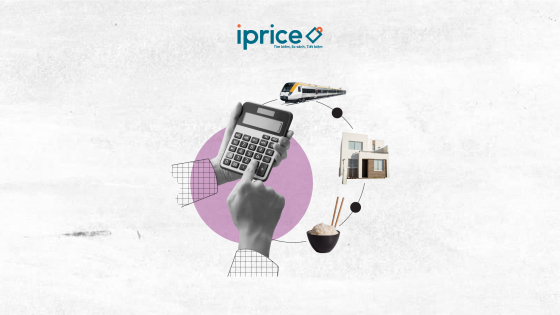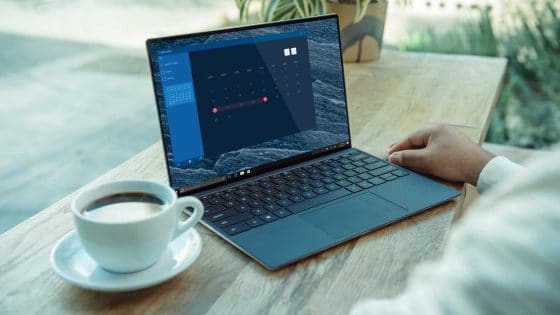Although the city-state is named amongst the greenest city in Asia, there is so much we can do to save our environment. A recent report mentioned that we still waste about 820 million plastic bags, 1,334 tonnes of disposable cutlery and packaging each year.
Apart from using the usual rhetoric that we should go green for the environment; data shows that it can help us save thousands of dollars a year using the eco-friendly alternatives available.
As such, iPrice Group recently conducted a price analysis between each product (both disposable and eco-friendly). And they found that an average woman can save as much as S$1,420 a year, while an average man can save up to S$1,336 a year if they completely invest in eco-friendly alternatives.
To give an idea, we could afford the newest smartphone such as iPhone 12 (128GB), Samsung Galaxy Note 20, and many others at the same price.
Here are 5 eco-friendly items that can help you save money while saving the planet:
- Item: Reusable Masks. Savings: S$146/year. Waste reduced: 365 disposable masks/year
COVID-19 has given us an additional essential cost for face masks. Disposable masks don’t come in cheap, especially the good-quality 3-plies. Based on iPrice’s platform, the average price of 365 disposable masks (assuming we use one mask a day) would cost about S$153, while investing in a pack of washable, reusable masks would only cost S$7. An average person can spare S$146 a year with the eco-friendly choice
- Item: Menstrual Cup. Savings: S$84/year. Waste reduced: 240 menstrual pads/year
The average price of a menstrual cup is about S$20, and these are said to last years or even up to a decade. On the other hand, if a woman uses 20 menstrual pads per cycle, she would waste about 240 pads a year. The average price of a year’s worth of disposable menstrual pads on iPrice’s platform is S$104. A woman could save up S$84/year if she just gets herself a diva cup.
- Item: Tote Bags. Savings: S$1,130/year. Waste reduced: 3,650 plastic bags/year
According to a report conducted by Singapore Environment Council, an average person is estimated to take 2 to 4 plastic bags from supermarkets per trip which contributes to 28-30 plastic bags a week. Using this estimate, a single person would waste about 3,650 plastic bags a year.
Given this glaring amount of waste, some stores charge extra for the use of plastic to discourage customers. A year’s worth of plastic bags would cost about S$1,195, while investing in tote bags (3 qty) would only cost about S$65. Consumers may even find a cheaper, more practical tote bag than the average one on iPrice’s platform, as stylish tote bags were also part of the platform’s database.
- Items: Metal Straw. Savings: S$35/year. Waste reduced: 365 disposable straws/year
A lunch time visit to any hawker centre, coffee shop, or even boba stalls, single-use straws are commonly used everywhere in the city. And if a person uses one plastic straw a day, a year’s worth would cost about S$42.5. Investing in a reusable metal straw would cost S$7, S$35 less than 365 plastic straws. Understanding that an average person wouldn’t really pay for plastic straws in restaurants or boba stalls, this could also be a cost and waste-reducer for restaurant owners.
- Item: Metal Chopsticks. Savings: S$25/year. Waste reduced: 200 disposable chopsticks/year
Say if an average Singaporean uses 200 pcs of chopsticks a year (half of how much a Chinese uses, according to a study), it would cost them about S$33, while investing in metal chopsticks would only cost S$8. As mentioned, not everyone necessarily purchases their own disposable chopsticks. Thus, this figure could also be an indicator for restaurant owners to go greener as well.
View the original report here.
iPrice curates highly insightful data that are unique and unbiased in the world of tech, e-commerce, and online retail by providing data-rich, interactive, and media-specific targeted content that varies from the latest tech trends to the top e-players in Southeast Asia. They also provide high-quality country-specific insights and data on seven markets, namely Singapore, Hong Kong, Vietnam, Thailand, Indonesia, Malaysia, and the Philippines. Through collaborations with data partners such as App Annie Intelligence, SimilarWeb, and Parcel Perform, iPrice has been featured on numerous prominent publications including South China Morning Post, Bloomberg, Motley Fool, Nasdaq, IGN, and Tech Crunch, to name a few.



















